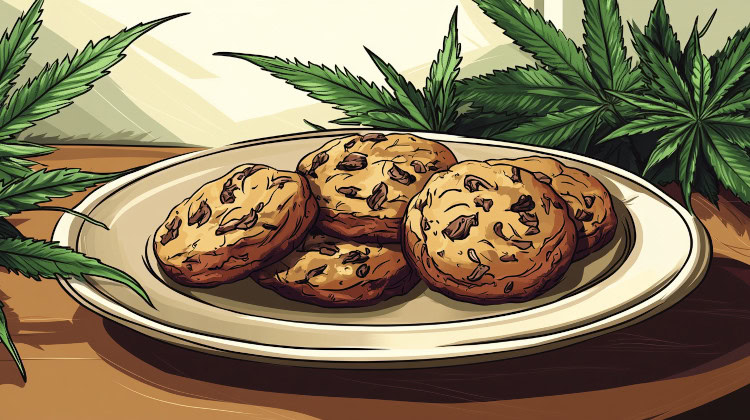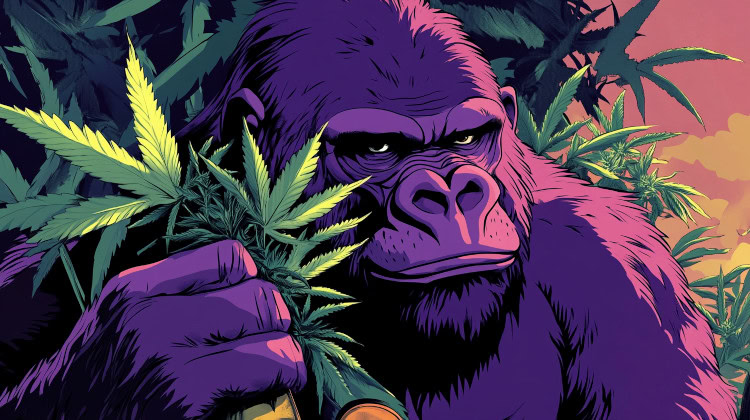Key Takeaways
- Landrace strains are the original cannabis varieties and include Afghani, Thai, and Durban Poison.
- Similar strain names often reflect a shared lineage.
- The top cannabis families include Kush, Haze, Cookies, Diesel, and Purple.
When browsing a dispensary's menu, you may have noticed many strains sound like distant cousins (looking at you, OG Kush, Bubba Kush, and Purple Kush).
Cannabis has a rich family history. Understanding the cannabis family tree can help you better predict the experience of each cultivar and more accurately pick the perfect strain for your specific needs.
5 Best Strain Families
While plenty of strains come and go, these five families have stood the test of time, shaping cannabis genetics and earning devoted fans along the way.
The Kush Family

The Kush family traces its roots back to the Hindu Kush mountains along the Afghanistan–Pakistan border. These plants were tough, squat, and built for survival, perfect for breeding indicas commonly linked to relaxation.
- Reported Effects: Heavy, relaxing, often sleepy. Often chosen for nighttime use or zoning out.
- Flavor: Earthy, piney, sometimes sweet, and floral.
- Common Terpenes: Myrcene, linalool, limonene, and caryophyllene
- Famous Descendants: OG Kush, Bubba Kush, Master Kush, Purple Kush.
- Why It’s Popular: Typically chosen for strong body effects and its seemingly uncanny ability to melt tension. Many patients choose this to unwind or relax at the end of the day.
The Haze Family

Born in California in the ’60s, Haze strains combined sativas from around the world (Thailand, Mexico, Colombia, and India) to create a unique, buzzy, brainy high that didn’t quit.
- Reported Effects: Commonly described as uplifting, energetic, and often trippy. Fans of these strains choose them for daytime use or creative bursts.
- Flavor: Citrus, spice, herbal, sometimes a little funky.
- Common Terpenes: Terpinolene, pinene, myrcene, caryophyllene, and limonene
- Famous Descendants: Super Silver Haze, Amnesia Haze, Lemon Haze, Ghost Train Haze.
- Why It’s Popular: Some patients reach for Haze reporting it creates a sunny feeling, like a hazy summer day, letting users flow through the day with no heavy body load.
The Cookies Family

The original Girl Scout Cookies (GSC) strain blew up in the 2010s and spawned a dessert-inspired empire of hybrids with sweet flavors and balanced effects.
- Reported Effects: Happy, relaxed, and just the right amount of spacey.
- Flavor: Dessert-forward, think mint, dough, vanilla, and fruit.
- Common Terpenes: Caryophyllene, limonene, myrcene, and pinene
- Famous Descendants: GSC, Thin Mint, Sunset Sherbet, Gelato, Runtz.
- Why It’s Popular: Often chosen for its balanced effects. Some describe it as uplifting yet mellow enough for daytime use.
The Diesel Family

Diesel strains are loud. One whiff and you’ll understand the name. These pungent powerhouses came from Chemdawg and Super Skunk genetics.
- Reported Effects: Energizing, heady, sometimes borderline psychedelic.
- Flavor: Fuel, skunk, citrus, spice.
- Common Terpenes: Myrcene, limonene, caryophyllene, and pinene
- Famous Descendants: Sour Diesel, NYC Diesel, Strawberry Diesel.
- Why It’s Popular: Known for getting a user's engine revved, many people report a stimulating mental buzz and a talkative or upbeat headspace.
The Purple Family

No, it’s not just about color, but the deep violet buds do make an impression. Purple strains often come from Afghani and Kush lineages, but what ties them together is that reportedly relaxing, grape-like sweetness.
- Reported Effects: Mellow, calming, sometimes sedating.
- Flavor: Berry, grape, floral, earthy.
- Common Terpenes: Myrcene, caryophyllene, pinene, and linalool
- Famous Descendants: Granddaddy Purple, Purple Urkle, Grape Ape.
- Why It’s Popular: Frequently associated with evening use, some consumers describe these strains as the perfect nighttime chill, with rich flavor and a relaxing body feel.
What Were the First Cannabis Strains
Before we had the "strains" or cultivar varieties we see on today’s dispensary shelves, cannabis grew wild and untamed. There were no fancy names, just pure, regional varieties shaped by sun, soil, and generations of survival. These original plants, called landrace strains, are the great-grandparents of everything we smoke today.
Some of the most influential landraces still show up in cannabis cultivars today. These parent strains include:
- Afghani: This sticky indica from the Hindu Kush mountains is often associated with relaxation and sedation, and became the backbone of heavy hitters like OG Kush and Northern Lights.
- Thai: A sativa often known for its uplifting effects and spicy, citrusy notes. It became famous as the bud of choice for old-school "Thai sticks"—buds tied to bamboo stems.
- Durban Poison: A sweet, earthy sativa from South Africa that grows like a weed (literally) and is often linked to a clear-headed, uplifting buzz.
- Acapulco Gold: The ’70s legend. Known for its smooth smoke, golden buds, and reported euphoric effects.
Over centuries, these landrace strains adapted to droughts, pests, and harsh climates, developing hardy traits that breeders later used to create tougher hybrids.
When hippies, travelers, and breeders brought these seeds back to the U.S. and Europe in the ‘60s and ‘70s, they started crossing them to create stronger, faster-growing, or more flavorful hybrids. These landrace strains became the roots of every cultivar we have available today.
It’s rare to find true landraces in most dispensaries. However, some breeders still work with preserved landrace seeds, which are more difficult to grow (and less potent) than modern hybrids.
Why Do So Many Strains Have Similar Names?
Review any dispensary menu, and you'll spot the patterns immediately. OG Kush, Purple Kush, Bubba Kush. Or maybe it's Girl Scout Cookies, Thin Mint Cookies, and Platinum Cookies.
That's no accident. It's weed genetics at work. When breeders create new strains, they often keep part of the original name to honor its lineage and hint at what to expect.
That "Kush" tag tells you it most likely descends from those original Afghani landraces, and it may deliver the heavy relaxation Kush cultivars are often noted to have. Another example is the "Haze" family, which is typically linked with an energetic, cerebral sativa experience.
Reusing part of a strain name does a few things.
- It credits the original genetics, like the fact that many "Cookies" variants trace back to the original Girl Scout Cookies.
- It’s also a gentle guide for potential experience. If you’re into Sour Diesel, you might also be drawn to other Diesels, though effects can vary.
- Sometimes, it marks slight variations, like how SFV OG denotes the San Fernando Valley version of OG Kush.
But here's the catch. Not all names are created equal. Some borrow famous strain names purely for marketing appeal without the genetic credentials. Those looking for a particular experience may look beyond the name to check the actual lineage when possible.
How Did Cannabis Breeding Get Started
Back in the day, cannabis grew wild, and what you got was whatever nature and your region served up. But things changed fast once those hardy landrace strains started making their way from places like Afghanistan, Mexico, and Thailand into the hands of curious growers in the U.S. and Europe.
In the 1960s and ’70s, underground breeders began crossing these landraces to create something new: plants that grew faster, yielded more, or packed a more potent punch. It was part experimentation, part necessity. Some wanted shorter flowering times. Others were chasing unique flavors or medical effects. And just like that, hybrid cannabis breeding was born.
At first, it was a lot of trial and error. But over time, growers started dialing in the process, selecting specific traits like bud density, smell, or potency and locking them in over generations. That’s how the first real strain families emerged: OG Kush, Haze, Skunk, and more, each with a genetic fingerprint that could be passed down and adjusted.
Prohibition made things messy. Breeders worked in secrecy, and strain histories sometimes got lost or embellished. That’s why even today, the origins of classics like OG Kush are still debated.
Now, breeding is a full-blown science, with labs testing cannabinoids, terpenes, and stability. But at its core, it’s still about that same original mission: Take two great strains, and make something even better.
The information in this article and any included images or charts are for educational purposes only. This information is neither a substitute for, nor does it replace, professional legal advice or medical advice, diagnosis, or treatment. If you have any concerns or questions about laws, regulations, or your health, you should always consult with an attorney, physician or other licensed professional.




